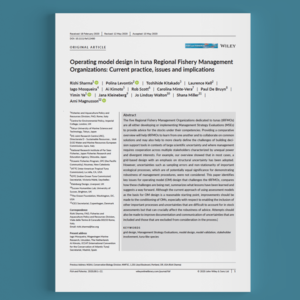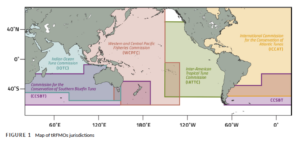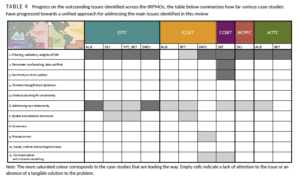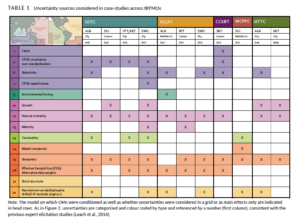Abstract
The five Regional Fishery Management Organizations dedicated to tunas (tRFMOs) are all either developing or implementing Management Strategy Evaluations (MSEs) to provide advice for the stocks under their competencies. Providing a comparative overview will help tRFMOs to learn from one another and to collaborate on common solutions and may also help to more clearly define the challenges of building decision support tools in contexts of large scientific uncertainty and where management requires cooperation across multiple stakeholders characterized by unequal power and divergent interests. For example, our overview showed that in most cases, a grid-based design with an emphasis on structural uncertainty has been adopted. However, uncertainties such as sampling errors and non-stationarity of important ecological processes, which are of potentially equal significance for demonstrating robustness of management procedures, were not considered. This paper identifies key issues for operating model (OM) design that challenges the tRFMOs, compares how these challenges are being met, summarizes what lessons have been learned and suggests a way forward. Although the current approach of using assessment models as the basis for OM design is a reasonable starting point, improvements should be made to the conditioning of OMs, especially with respect to enabling the inclusion of other important processes and uncertainties that are difficult to account for in stock assessments but that can crucially affect the robustness of advice. Attempts should also be made to improve documentation and communication of uncertainties that are included and those that are excluded from consideration in the process.




